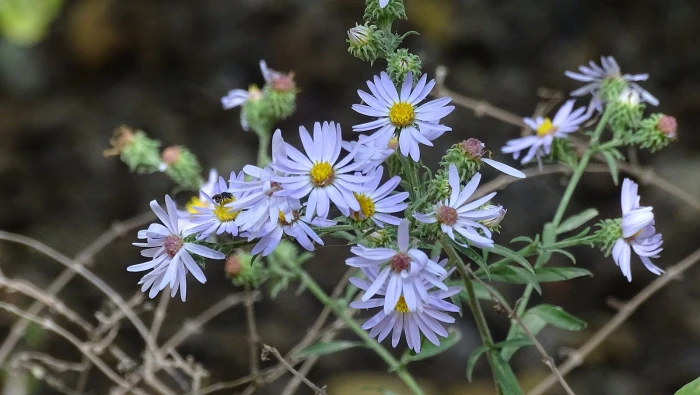Manyray Aster
(Symphyotrichum anomalum)
Manyray Aster (Symphyotrichum anomalum)
/
/

Samantha H
CC BY-SA 4.0
Image By:
Samantha H
Recorded By:
Copyright:
CC BY-SA 4.0
Copyright Notice:
Photo by: Samantha H | License Type: CC BY-SA 4.0 | License URL: http://creativecommons.org/licenses/by-sa/3.0/ | Uploader: Eewilson | Publisher: Wikimedia Commons |



































Estimated Native Range
Climate Requirements for Tempe, Arizona
| This Plant | Your Site | Plant Suitability for Your Location | ||
|---|---|---|---|---|
| • Precipitation | 35" - 60" | 8" | Your precipitation may be insufficient for this plant. Irrigate N" / year. | Irrigate N" / year |
| • High Temp. | 84°F - 94°F | 106°F | Your summers may be too hot for this plant. | Too hot |
| • Low Temp. | 13°F - 31°F | 41°F | OK, but your winter temperatures are warmer than normal for this plant | OK |
This plant should grow well at your location with about N inches per year (Y minutes per month) of irrigation.
Summary
Symphyotrichum anomalum, commonly known as Manyray Aster, is a deciduous perennial herb native to prairies, meadows, and open woodlands in the Central United States. It typically grows to a height and width of 2-3 feet, forming a clumping mound of foliage. The plant is characterized by its numerous daisy-like purple flowers with yellow centers that bloom profusely from late summer to fall, providing a long-lasting display of color. The flowers are highly attractive to pollinators such as bees and butterflies.
Manyray Aster is valued for its late-season blooms, which can enliven a garden when many other plants have finished flowering. It is often used in naturalistic plantings, wildflower gardens, and as a border plant. This aster prefers part shade but can tolerate full sun in cooler climates. It is adaptable to a range of soil types, provided they are well-drained. While it has low to medium water requirements, it benefits from occasional watering during prolonged dry spells. Manyray Aster is relatively low-maintenance, but it can be susceptible to powdery mildew if air circulation is poor.CC BY-SA 4.0
Manyray Aster is valued for its late-season blooms, which can enliven a garden when many other plants have finished flowering. It is often used in naturalistic plantings, wildflower gardens, and as a border plant. This aster prefers part shade but can tolerate full sun in cooler climates. It is adaptable to a range of soil types, provided they are well-drained. While it has low to medium water requirements, it benefits from occasional watering during prolonged dry spells. Manyray Aster is relatively low-maintenance, but it can be susceptible to powdery mildew if air circulation is poor.CC BY-SA 4.0
Plant Description
- Plant Type: Herb
- Height: 2.5-3 feet
- Width: 2-2.5 feet
- Growth Rate: Moderate
- Flower Color: Purple
- Flowering Season: Summer, Fall
- Leaf Retention: Deciduous
Growth Requirements
- Sun: Part Shade
- Water: Low, Medium
- Drainage: Slow, Medium, Fast
Common Uses
Bee Garden, Bird Garden, Butterfly Garden, Drought Tolerant, Low Maintenance, Showy Flowers
Natural Habitat
Native to prairies, meadows, and open woodlands in the Central United States
Other Names
Common Names:
Scientific Names: Symphyotrichum anomalum, Aster anomalus, Aster anomalus f. albidus
GBIF Accepted Name: Symphyotrichum anomalum (Engelm.) G.L.Nesom